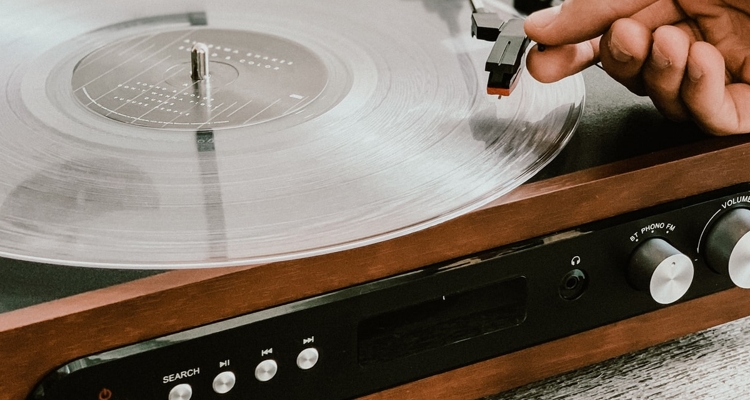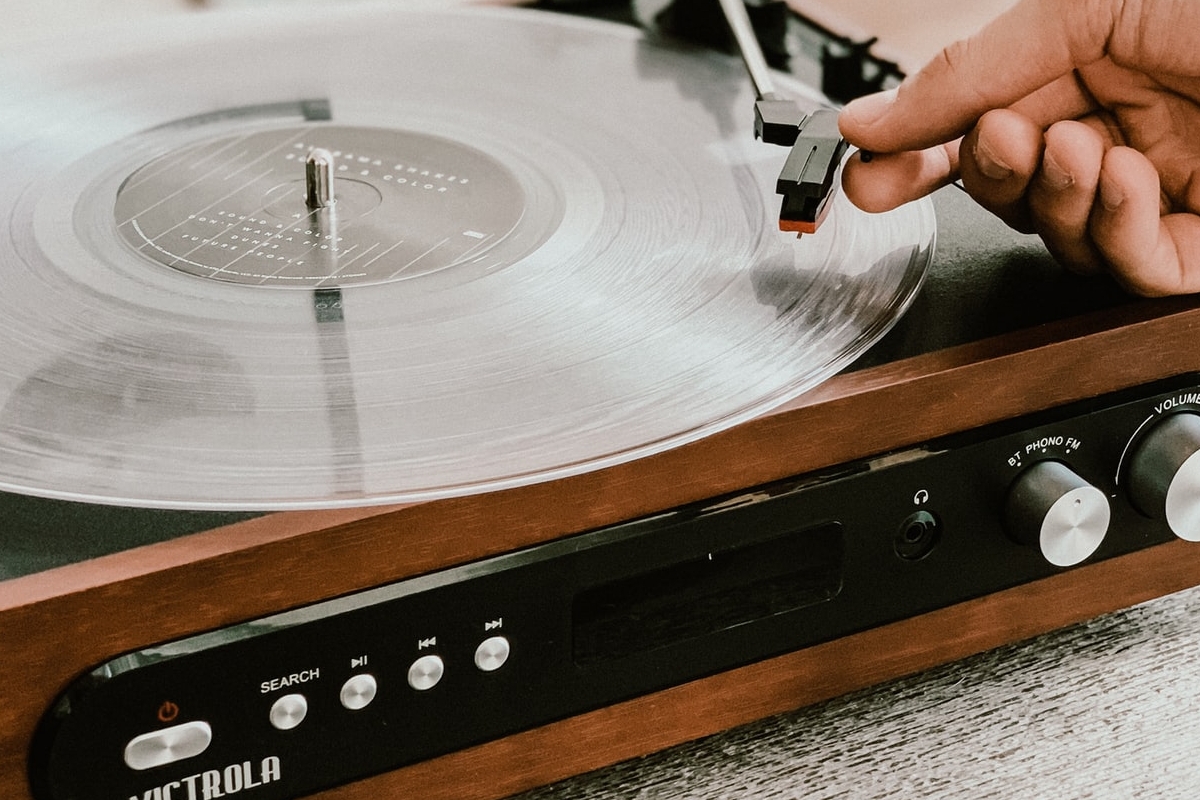
Photo Credit: Victrola
Though U.S. vinyl record sales enjoyed a 108.2 percent year-over-year increase during 2021’s first six months, a number of indie acts and record labels are expressing their frustration with the popularity uptick’s impact upon the production process – and moving away from the format altogether.
MRC Data recently disclosed the triple-digit vinyl record sales growth in its 2021 half-year report, covering January 1st through July 1st. According to this analysis, stateside vinyl LP sales surpassed 19.2 million units through 2021’s initial two quarters, up 108.2 percent from HY 2020’s 9.2 million units. Additionally, the breakdown relayed that vinyl had outsold CDs in the U.S. “for the first time at the midyear point in MRC Data’s history (since 1991).”
More than a few mainstream acts are capitalizing upon the trend, the report also indicated, as Taylor Swift claimed the uppermost spot on the list of “Top Vinyl Albums” with Evermore (143,000 units sold during the period).
Harry Styles’ Fine Line (125,000 units) – which has long performed well on vinyl – took the second position, followed by Kendrick Lamar’s Good Kid M.A.A.D City (99,000 units), Billie Eilish’s When We All Fall Asleep, Where Do We Go? (89,000 units), and Prince’s Purple Rain (86,000 units). Michael Jackson (Thriller, 86,000 units), Billie Eilish (Don’t Smile At Me, 83,000 units), Taylor Swift (Folklore, 82,000 units), Queen (Greatest Hits, 75,000 units), and Fleetwood Mac (Rumours, 73,000 units) rounded out the list.
Bearing in mind these figures, the corresponding fan and record-label demand, and the production-related consequences of unfortunate setbacks, professionals throughout the indie sector are taking issue with and moving away from the contemporary vinyl space, according to a report from Pitchfork.
Emphasizing the year-long wait that some creators must endure before receiving their (admittedly expensive) vinyl orders, the piece highlights the concerns of individuals including Not Not Fun Records’ Britt Brown. “This vinyl turnaround crisis is by miles the worst I’ve ever known it,” said the 100% Silk co-founder Brown, who further communicated that the less-than-encouraging reality “raises the question if the format will even continue to be viable.”
Others echoed the position and made clear that they’re turning to the comparatively easy-to-manufacture CDs and cassettes, so as to continue affording dedicated fans physical releases. Especially because vinyl record sales are showing few signs of slowing down, it’ll be worth monitoring the landscape in the coming weeks and months.
And on this front, it should be noted in conclusion that vinyl upstarts like Qrates have emerged to help artists cash in on the format while minimizing the financial risk (and avoiding the potentially lengthy wait) associated with pressing records. Plus, in another byproduct of the format’s growth, a joint recording studio, record-pressing facility (the first in North Carolina), record store, and café, Citizen Vinyl, opened last year.

